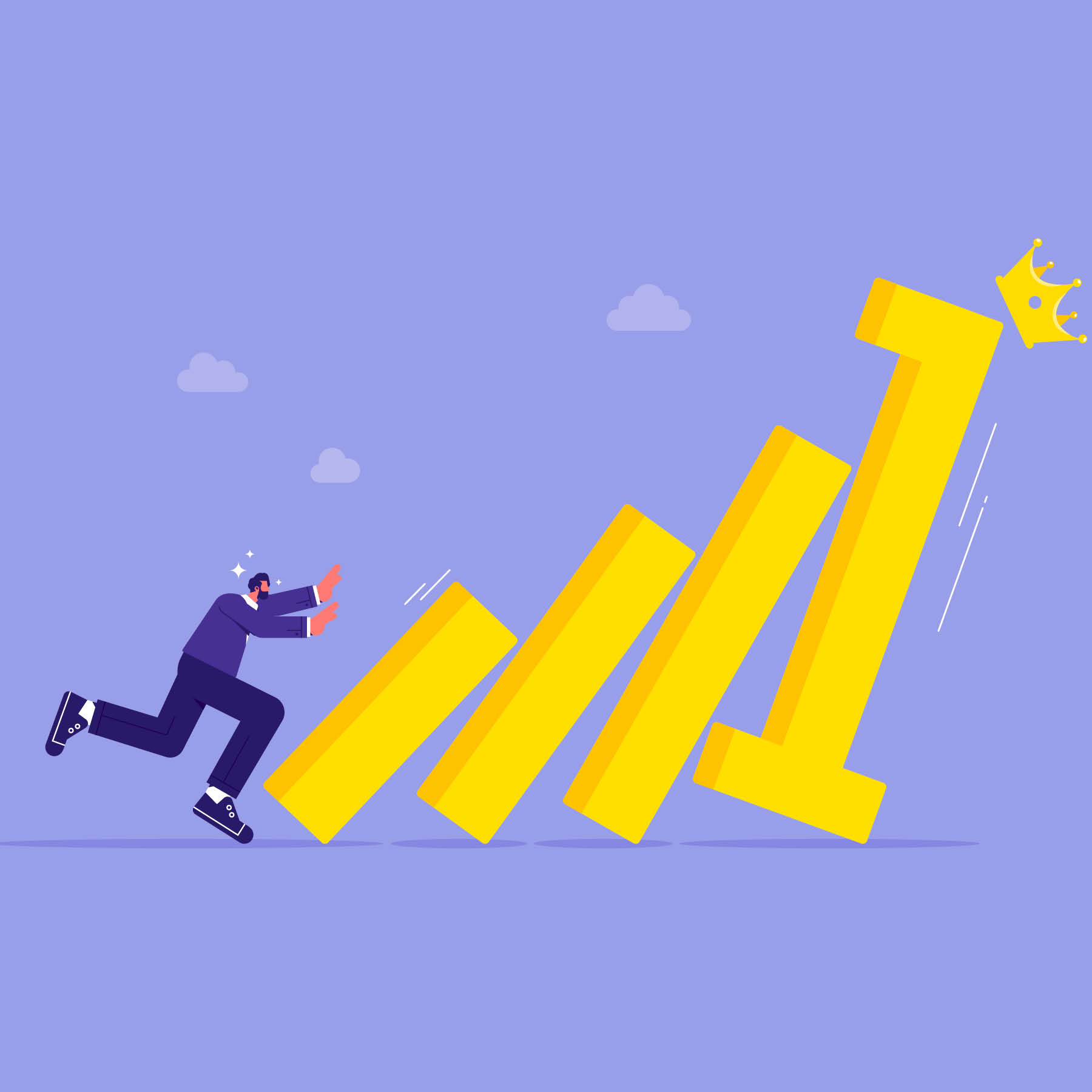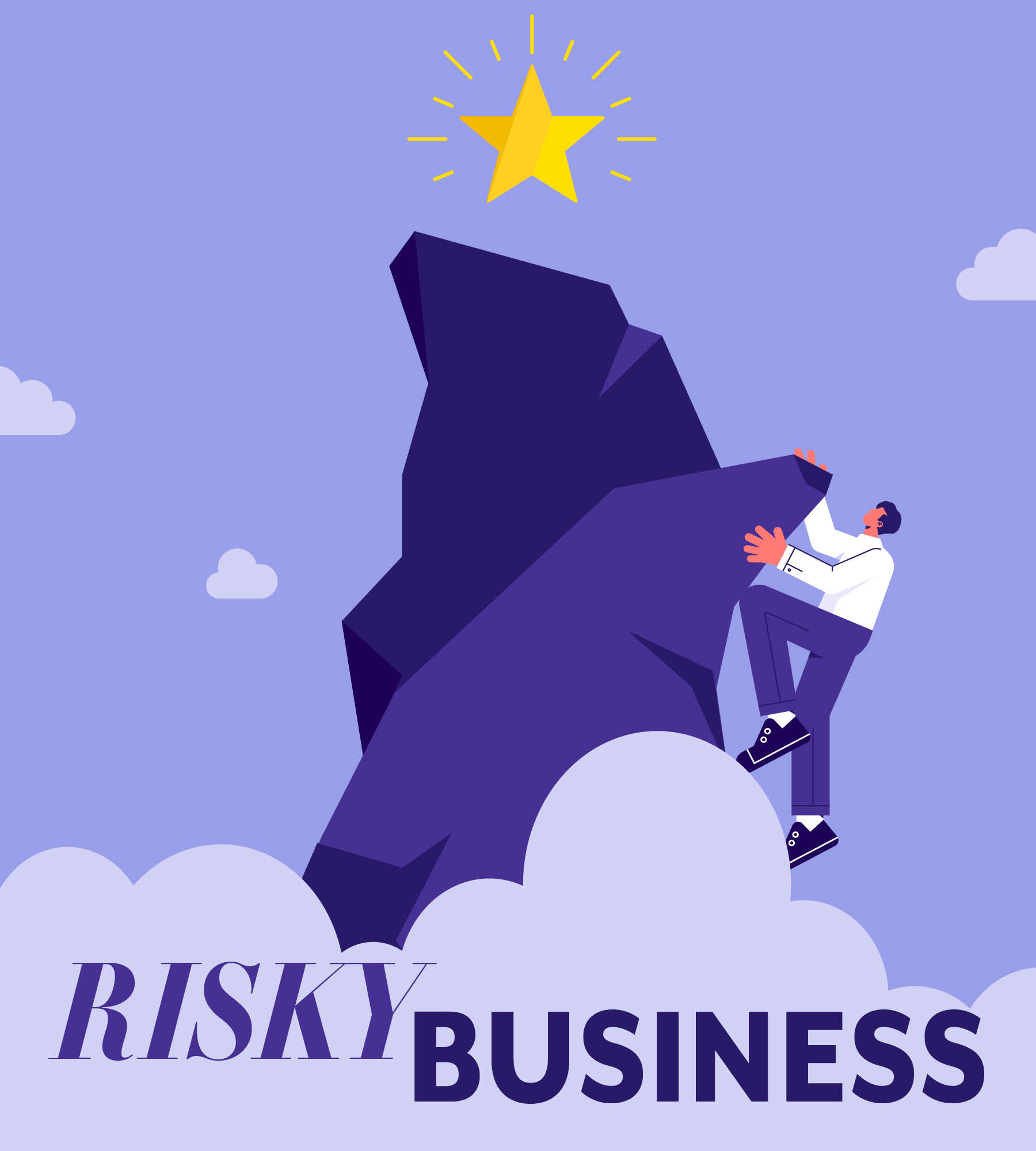Language
You can read the magazine in one of the following languages
Being willing to take risks is a common theme when looking at the success stories of admired founders and CEOs. Risk-taking seems, in many cases, to be the transformative moment which propels them to next-level career and personal achievement.
But for some people, the ability to take that leap or embrace chance is not an easy one – and can lead to decision paralysis or an inability to achieve their potential.

“I think the biggest misconception about taking risks is that it’s better to take a big risk or take no risk at all,” says Sukhinder Singh Cassidy, CEO of cloud-based accounting software company Xero.
“This is what I call the ‘myth of the single choice’ – the belief that we are always one massive decision away from glory or failure. In fact, significant success or achievement is about our ability to keep choosing, to take many little risks, some of which succeed and some of which fail, but from which we draw learning on the path to the larger impact we seek.”
In her book, Choose Possibility, Cassidy discusses this universal risk equation and says it’s something she faces and endeavors to overcome daily in her life. Personally, she feels her ability to take risks stems from her desire to build and have impact while pursuing possibility, rather than an innate tendency to engage in risky choices with little forethought.
“I am constantly trying to balance my fear of missing out on a great opportunity or potential, and my fear of failure in the pursuit of that ambition,” she explains.
“I’ve tried to apply tactics in my own life to reduce the fear enough to allow me to act and spur personal or professional growth. I try to be a smart risk-taker at work and home and embrace the idea that action is better than being stuck in fear and indecision when it comes to making progress overall,” she says.
Cassidy identifies four types of risk-takers. She’s a ‘calculator’ and believes understanding how you view and approach risk is helpful to developing and growing.

“It’s important to know where your innate style lies on the risk-taking spectrum and where that serves and protects you and where that holds you back.”
“It’s important to know where your innate style lies on the risk-taking spectrum and where that serves and protects you and where that holds you back,” Cassidy says. “Each of us needs to be in conversation with our ‘inner risk manager’, and it’s totally appropriate to think about where you can take more or less risk if you are trying to be a smart ‘risk-taker’ in life.”
She acknowledges that different life stages can alter our risk tolerance; for example, how we approach financial risk when we are single is not the same as it might be if we have small children.
“Ironically, however, the biggest risk-taking challenges for a lot of people are not about taking financial risks but about taking ego risk. That is, the idea that if we try something and fail at it, others will think less of us or we will think less of ourselves,” she says.
“I think that is less life-stage dependent and more about realizing that what’s holding us back is a mindset,” she adds.
Cassidy links this, too, back to the myth of the single choice and has worked through the feelings and limitations herself, most notably when she had just left college.
“I agonized over single big interviews and every time I failed to get the offer, my ego took a massive hit and I was convinced I was doomed,” she says.
But Cassidy kept going and spent the next year interviewing for jobs.
“Ultimately what gave me confidence was not a successful job process but an ambitious fail,” she recalls.
“I came extremely close to getting a job for which I was not at all qualified but had taken a chance on applying for. I ended up in the final two. When the job was given to the other candidate, instead of yet again feeling ashamed, I felt proud to have gone so far,” she says.

“Looking outside in, people’s resumes can appear perfect, but inside out you can see the choices they made that were not clear or visible to others that led to overall learning or progress.”
With a renewed sense of confidence, six months later Cassidy had a job and she had learned the lesson that it is important to take many small risks on the path to success.
It is a lesson she has acted upon over the past three decades, during which time she has become a respected force in the technology space. But Cassidy insists we shouldn’t look at other people’s CVs and make assumptions – that’s something which can stunt our own journey.
While writing Choose Possibility, she spoke with a number of fellow leaders and was intrigued at what she discovered.
“The biggest surprise was just how winding and non-linear everyone’s individual path to success was,” she says.
“Looking outside in, people’s resumes can appear perfect, but inside out you can see the choices they made that were not clear or visible to others that led to overall learning or progress. My own path to the CEO seat has been a winding one, but all were choices that helped me iterate my way to my current position, even if some of them were failing choices on a one-off basis; this was a universal experience amongst us all.”
It’s proof that risks do pay off in the end.

Instead of thinking about a big move as one massive choice or leap, break it down into smaller steps that you can take to get into motion – that give you iterative learning – before you have to make a big, final choice.
“A perfect example is being unhappy in our current job and imagining if we quit, we will be ruined financially, and thus deciding to take no action at all,” Cassidy explains.
“Instead, make a list of all the things you can do to solve the current situation and get a taste for the external job market. Start taking small steps, then you can make an unfolding set of choices with more and more data before you need to ‘just quit.’”
This could include chats with your boss about other opportunities, updating your CV and approaching recruiters. The more options and smaller risks taken mean if one doesn’t pay off there are other pathways to success, and casting your net wide can certainly pay dividends.
“Just taking small actions and risks will get you on the path to bigger change,” she says.
